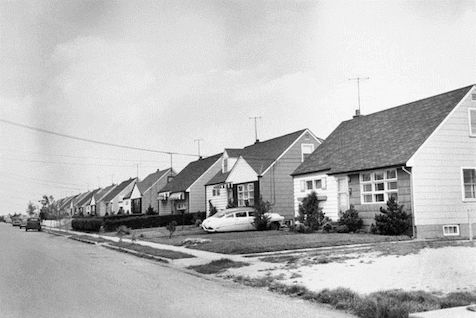 Imagine it’s 1956 and you are writing your first 30-year fixed-rate mortgage as a loan officer working for your local bank. It was a historic period in home financing as most mortgages up to that time had 20 year amortization periods until the Federal Reserve began significantly increasing interest rates. In the effort to keep home financing affordable despite higher rates the Federal Housing Administration broadly adopted what is now the gold standard of mortgage lending- the 30-year fixed.
Imagine it’s 1956 and you are writing your first 30-year fixed-rate mortgage as a loan officer working for your local bank. It was a historic period in home financing as most mortgages up to that time had 20 year amortization periods until the Federal Reserve began significantly increasing interest rates. In the effort to keep home financing affordable despite higher rates the Federal Housing Administration broadly adopted what is now the gold standard of mortgage lending- the 30-year fixed.
Today we find ourselves in the historic moment of the COVID-19 pandemic which has left many sectors of our economy closed, partially opened, or closed again. This modern-day plague has instilled a strong sense of insecurity in many, especially retirees. However, history has taught us that disease and economic upheaval are found throughout written history. The Roman Emperor Marcus Aurelius wrote the following during the Antonine Plague. “To bear in mind constantly that all of this has happened before and will happen again—the same plot from beginning to end, the identical staging”.
Just as the Fed’s continued interest rate hikes in the 1950s spurred innovation and public acceptance of the 30-year mortgage, economic uncertainty is moving many undecided homeowners to reconsider a reverse mortgage- or at least to put their guard down momentarily to research how the loan works. Uncertainty and need are still two of the common motivators in getting a reverse mortgage. It then comes as no surprise that counseling agencies find themselves struggling to find available slots for required borrower counseling- not surprising since FHA case numbers issued have surged to a record number HECM applications recorded in the months of March, April and May when compared to recent years.
Another historical shift we’re experiencing is how quickly older Americans are embracing remote meeting technology to stay in touch with family and friends while ‘social distancing’. Grandma and Grandpa are highly motivated to see their grandchildren’s smile and interact on a more intimate level than merely a phone call. Consequently, the resistance to using teleconferencing services such as Skype, Zoom, or Google Meet has dropped considerably. Reverse mortgage professionals have seized upon this shift offering remote appointments and ‘touch-less’ loan closings.
While useful in times of relative economic stability reverse mortgages are absolutely essential as long term financial outlooks are clouded by concerns of inflation, a volatile stock market, and investment losses. Will the general public suddenly embrace reverse mortgages just as they adopted the 30-year mortgage 70 years ago? Don’t go placing your bets in Vegas just yet. However, the present moment in history we share provides the occasion to make inroads with homeowners and financial professionals alike- both who’ve been harshly reminded that the only thing that’s certain in life is uncertainty itself.







1 Comment
One of the most amazing and illogical statements heard around the industry is how that today’s HECM is so superior to the HECMs of the past due to more safeguards. Yet over the last ten fiscal years, we have only seen loss or secular stagnation in annual fiscal year total endorsements. Even though fiscal year 2020 is likely to see an increase of 28% over total HECM endorsements for 2019, it is likely to be the start of another few years of stagnation. The problem of draconian safeguards can be easily seen in the amounts needed to fund a fully funded LESA for especially borrowers in their 60s.
Assume a LESA is being funded for a fully funded LESA when the expected interest rate is 3% and the senior is 62 with property charges of $12,000. The amount needed to fund that LESA is $213,935. If the expected interest is raised to 5%, the amount needed to fund the fully funded LESA is $179,112. The only difference between the two is the expected interest rate.While I am an user of discounted cash flow analysis, why is 21 years used in both computations? When most HECMs terminate within 10 years of their closing, does anyone believe that the 62 year old borrower holds onto their HECM for 21 years.
So let’s cut the number of years down to 10 years. The amount needed to fund the same LESA with the 3% expected interest rate drops by $92,583 to $121,352. With the 5% expected interest rate, the amount needed to fund the LESA drops by $68,540 to $110,572. By substituting the life of the HECM for the TALC life expectancy of the youngest borrower for the average expected life of a HECM, the amount needed to fund the LESA is far less harsh.
So what is being suggested? The TALC life expectancy of the youngest borrower should always be used in the amount needed to fund a fully funded LESA unless the average life of a HECM is lower.